Gymnastic rings are a common sight in the Olympics, with jacked gymnasts performing exciting but impossible-looking routines on them. With the rise in popularity of CrossFit and calisthenics, rings are even making an appearance in regular gyms. Of course, certain gymnastic ring exercises are notoriously difficult. But when acquiring new skills, it's always best to start with the simple stuff and slowly work your way up to a point where you can do the complicated movements.
Want to know how these simple circular tools can help you get fit, build muscle, and well, impress the hell out of everyone? While the movements of seasoned pros may look intimidating to the average gym-goer, there are plenty of ways of getting started. So let’s dive into the benefits of gymnastic rings, and how you can add them to your exercise routine.
But first, a primer.
Benefits of Gymnastic Ring Training
Rings offer a unique benefit compared to traditional weight training: constant instability (and we're not talking about your ex-boyfriend).
Rings, attached by straps to a single point, force you to work harder to maintain a stable position. All this fighting against gravity and body positioning is great for building upper body and core strength. It will also improve your shoulder joint health by putting the shoulder through a wide range of positions.
Look at any Olympic gymnast. They are absolutely jacked. The torso strength you'll need to move positions around the rings takes time to build. And “time” by “intensity” equals gains. Moving around the rings, under control, is great for your wrist health too. Unlike when working out with a bar, your wrists move with the rings, therefore putting less strain on them.
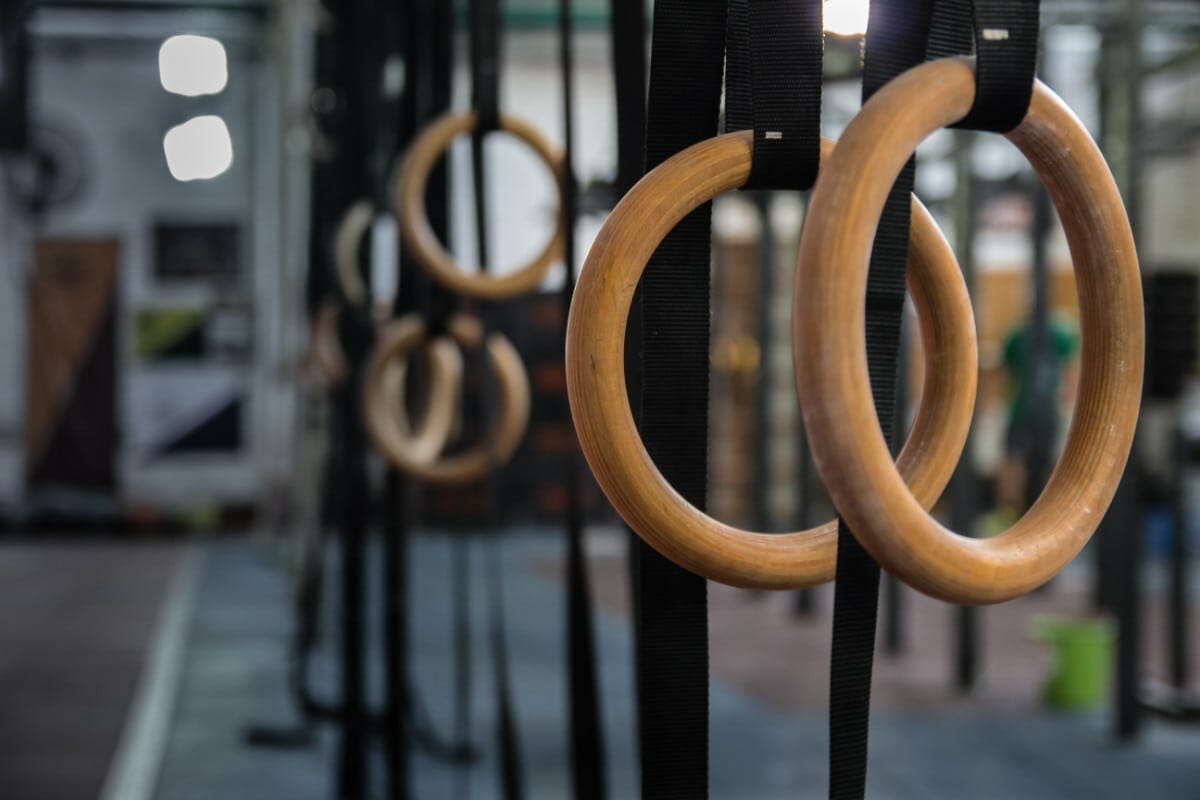
Gymnastic Rings Exercises
Just because we associate using gymnastic rings with the Olympics, doesn’t mean we have to be an Olympian to use them. No matter what level of fitness you are currently at, gymnastic rings have a place in your exercise regime. Ever heard of the quote “we have to learn to walk before we can run”? The same principle applies to using gymnastic rings. We have to start with the basics before working our way up. Jumping into complex movements too fast only leads to injury and bad movement patterns. Master the basics first, then progress gradually.
Warm Up
Instability puts additional strain on the shoulder joint. It is vital you complete an effective warm up before any exercise routine, but especially when working out with rings.
Before getting stuck into the session, spend 10-15 minutes going through different mobility drills and dynamic stretches focusing on the shoulder region.
Cool Down
Gymnastics ring workouts will leave you sore, especially for beginners. Use the rings to perform some static stretches after a session to reduce the DOMS and boost recovery. Spend a bit more time on the shoulder muscles, as this is where you’re going to hurt the most.
Ring Hang
The ring hang is one of two fundamental exercises. Very simple exercise, you just hang from the rings. Sounds simple, right? Well, it is. But, it should not be overlooked. The ring hang builds strength in your shoulders and grip, essential for the more complex movements. Set the rings at a height you can freely hang without touching the floor. No need to tense anything, just hang freely.
If that’s too challenging, put your tiptoes on the floor. If you’re able to hang comfortably for a couple of minutes, add in some scapula pull-ups to engage the lats a bit more. All you need to do is pull your shoulder blades towards the floor, without bending the arms.
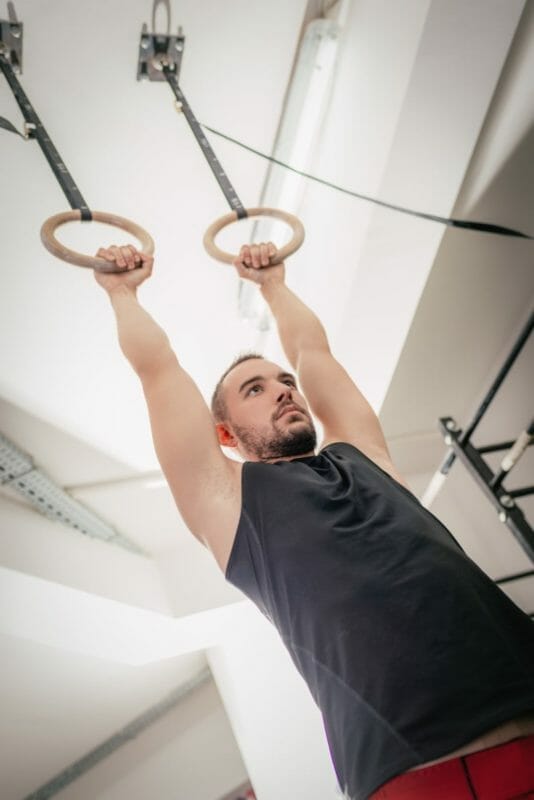
Top Support
Top supports, the second fundamental gymnastic ring exercises. Opposite to the ring hang, but equally as important. This time you’ll develop grip and shoulder strength by holding yourself above the rings. Set your rings to hip height. Grip with both hands and then take your feet off the floor, keeping your arms locked out, and hold.
Often we see people lose the ability to keep the rings close to their body in the top position. If this is you, take some weight off by standing on your tiptoes. If you can control the rings, try moving your arms out to the side, then bring them back to your center. The next progression
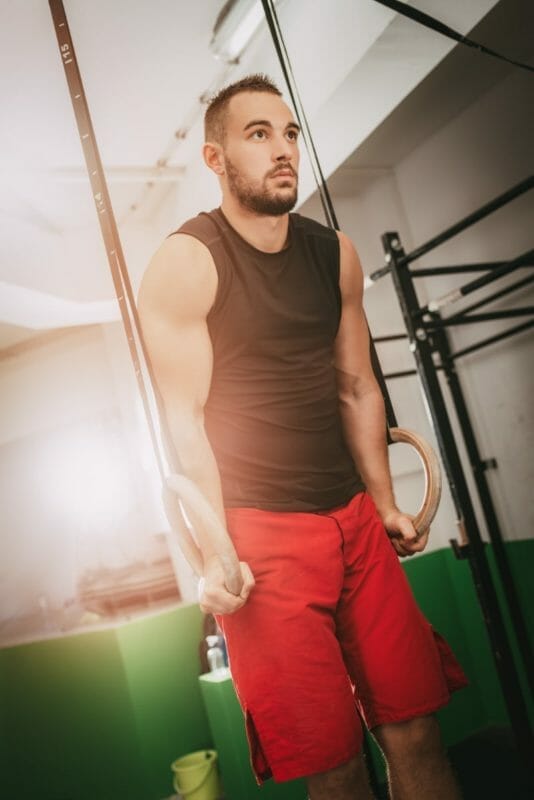
Ring Row
The ring row is great for developing pulling strength and power in your back and biceps. Set the rings to hip height. Grab the rings and place your feet in front of you, letting the rings take your weight. Pull your chest to your hands by bending the elbows.
You can make the ring row easier by bringing your feet closer to the rings, forcing your body into a more upright position. If you want more of a challenge, put your feet up on a box or bench to create a more declined position.
Rear Foot Elevated Split Squat
Who said ring training was just for your upper body? If you get creative, you can also supplement a great lower body workout. One great lower body exercise you can do on the gymnastic rings in the rear foot elevated split squat. It develops power and strength in the legs. Start by setting your rings to knee height. Place one foot inside the ring, with your laces sitting on top. Bend the opposite leg until your knee touches the floor. Drive through the ground to return to standing.
Too challenging? Perform regular split squats to get comfortable with the movement. If you’re looking for a real one-legged challenge, try pistol squats.
Ring Push-Ups
The ring push-up develops power and pushing strength in the chest, and triceps. Unlike a regular push-up, the ring provides a great range of motion. Set your rings anywhere between knee and hip height. Place your hands on the rings and put your feet against a wall or the ground. Make sure to put your body in a straight line, no bending of the hips. Unlock your arms until your chest meets your hands. Drive through the rings to return your arms to a locked out position.
You can change the difficulty of the push-up by changing the length of the rings. The lower the rings, the harder the ring push-up.
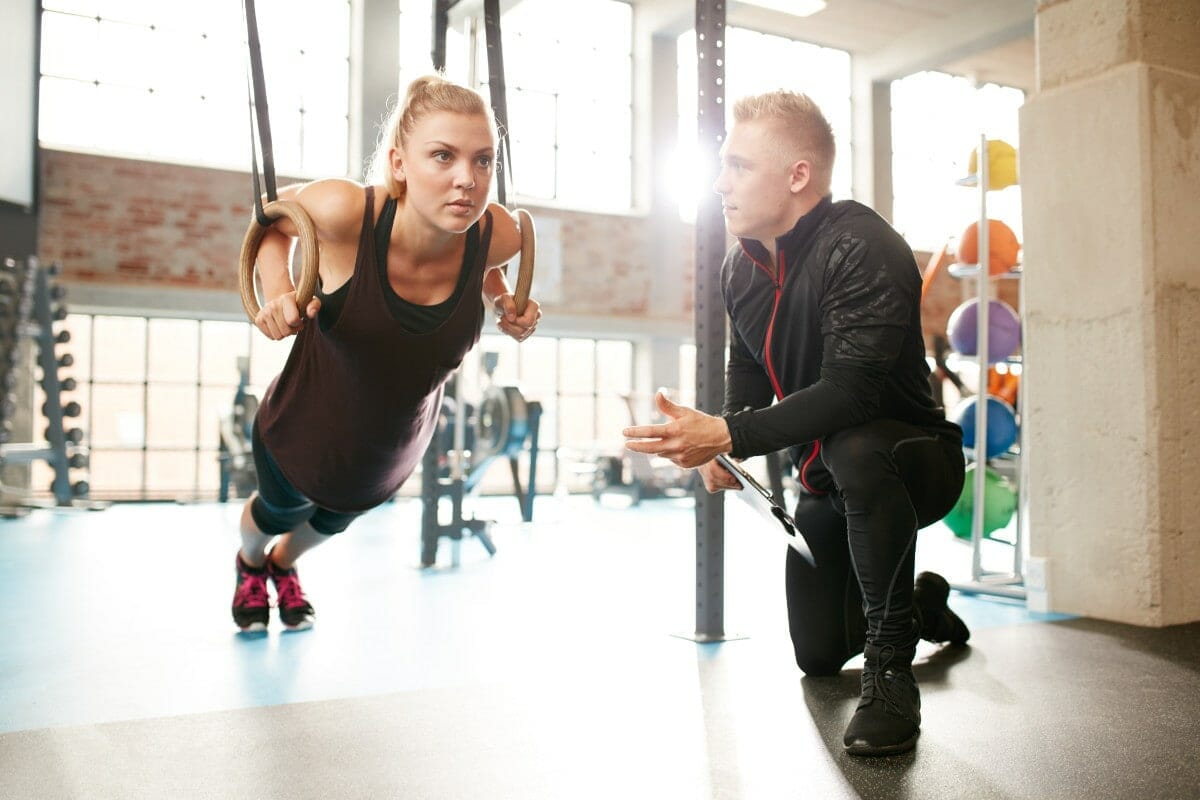
Ring Pull-Up
Unlike bar pull-ups, ring pull-ups force you to internally rotate your palm during the pull phase. This rotation activates the lats more, making it an epic exercise for building power and strength in your back. Set the rings to a height that allows you to hang without touching the floor. Start in the hang position, then use your back and arms to pull your chin above the rings.
The pull-up is a difficult movement. If you’re struggling, use a box or resistance band as support. As you progress, you will rely less on the band or box. If 10+ pull-ups are a breeze, pop on a weighted vest or belt for an extra challenge.
Ring Dip
Much like the push-up, dips are a great way to develop power and pushing strength in the chest and triceps, while providing a larger range of motion. Set the rings to hip height. Start in the top support position, then bend the elbows until your hands align with your chest. Drive through your palms to return to a locked out position.
Much like the ring pull-up, use a box or resistance band to support you if you’re struggling. If they’re too easy, use a weighted vest or belt to make them more difficult.
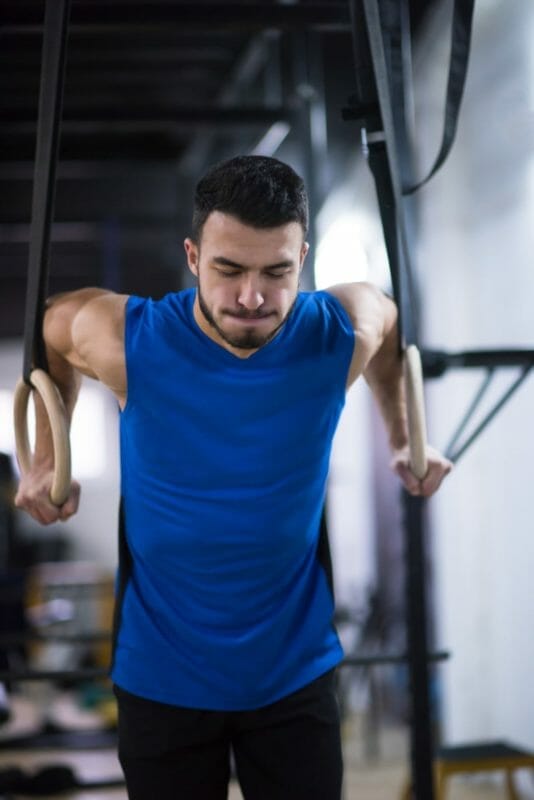
Advanced: Knee Tuck Front Lever
Your first step to performing some Olympic-style movements. A progression to the full front lever, the knee tuck front lever builds core strength. Start in the hang position. Bring your knees up to your chest while taking your head back. Your back should now be parallel to the floor. Hold this position for as long as possible. This is an advanced calisthenics exercise for back building.
If your core strength isn’t quite there yet, start by performing plank exercises. If you feel good, and your body allows, move on up to the full front lever.
Gymnastic Rings WODs / Workouts
Gymnastic rings can be used alone or as part of a workout or WOD.
Give the following CrossFit-style workouts containing gymnastic rings a go:
Workout 1: Upper Body Burner
10 Minute EMOM (Every Minute on the Minute)
- Odd Minutes: 8 handstand push-ups
- Even Minutes: 30 second top support
Workout 2: Put a Ring on Cindy
20 Minute AMRAP (As Many Rounds as Possible)
- 5 ring pull-ups
- 10 ring push-ups
- 15 air squats
Workout 3: Quad City
5 Rounds for Time
- 21 walking lunges
- 15 squat jumps
- 8 alternating pistol squats
- 30 second ring hang
Gymnastic Ring Tips
Be Patient and Consistent
There’s no denying, gymnastic ring training is hard. With consistent effort, you can build up the strength to perform fancy exercises. Remember earlier when we mentioned “we have to learn to walk before we can run”? Keep that in mind, and don’t overlook the fundamental movements. Rings can be a great addition to your strength training workouts.
Buy some sturdy rings for your home gym or back yard so you can practise without an audience.
Enjoy It!
Like any exercise, it’s there to be enjoyed. Have fun with your training, set some goals, drag in some mates, do whatever you want to get your adrenaline going.
